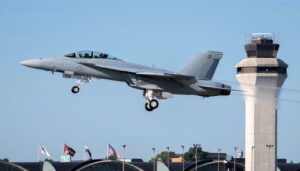
House appropriators have added more than $1 billion to the defense budget for fiscal 2015 that would allow the Navy to purchase a dozen of Boeing’s [BA] EA-18G Growler electronic attack aircraft, just more than half of the number identified by the service as an unfunded priority. While the full bill must still be approved by the House of Representatives, the number of Growlers is far more than what had been called for by the armed services committees in the…













